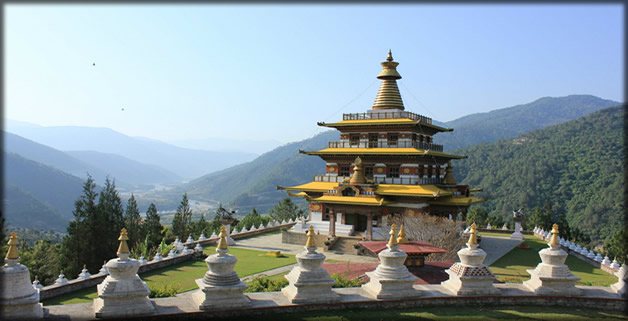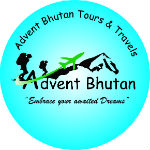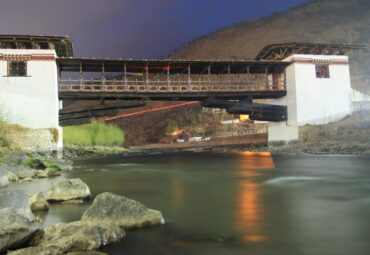5 Nights 6 Days Essence of Bhutan Tour
- Bhutan Cultural Tour
- 5 Nights - 6 Days
- 0 Review
- 3
- Unlimited
- 4 star and 5 star accommodations and meals (optional)
- Airfares (optional)
- All entrance fees to museums and monuments
- All internal taxes and fees
- All meals ( breakfast
- All meals ( breakfast, lunch, dinner & light refreshments) at 3 star hotels/tourist standard restaurants
- All necessary trekking equipments like sleeping tents
- All necessary trekking equipments like sleeping tents, dinning tents, kitchen tents, toilet tents, sleeping mats, sleeping bags
- All transfers and excursions by private vehicles
- Bhutan Government Royalty of US$ 65/person/night
- Bhutanese Tourist Visa fee of US$40/person (must be paid in advance with tour cost)
- charge
- Charges for porters ponies/mules for transportation on trekking trail
- dinner & light refreshments) at 3 star hotels/tourist standard restaurants
- dinning tents
- English speaking tour guide service
- Fees for Trekking cooks/ all meals on trekking
- FIT surcharges of US$40/person/night for a single traveler and US$30/person/night for a double
- kitchen tents
- lunch
- Mineral drinking water
- Other personal expenses like overseas calls, laundry,etc
- Single room supplement of US$40/room/night during low season and US$ 50/room/night during high season (optional)
- sleeping bags
- sleeping mats
- toilet tents
- Travel inssurance (recommended)
- Twin sharing hotel rooms at 3 star hotels
5 Nights 6 Days Essence of Bhutan Tour

Day 01: Arrive Paro
On arrival at Paro International airport and after completing your immigration formalities, you will be warmly welcomed by the representative of Advent Bhutan Tours who will be your Bhutan tour guide throughout your entire travel in Bhutan.
Check into the hotel in Paro. After brief rest and refreshment, you may start your mesmeric journey by first visiting the Farmhouse which offers a good glimpse into the Authentic lifestyle of Bhutanese farmers. Lunch at a farmhouse.After lunch, visit the following places:
The Kichu temple – It is one of the 108 temples built in the 7th century by the Tibetan King Songsten Gampo. The Jowo Temple of Kyichu is one of the oldest temples in Bhutan. To overcome a giant demon who prevented the spread of Buddhism, laid on the whole area of Tibet and the Himalayas, King Songtsen Gampo build 108 temples placed on all the points of her body.
The Rinpung Dzong, a Buddhist monastery and fortress which houses the district Monastic Body and government administrative offices of Paro Dzongkhag, a fine example of Bhutanese historic architecture. It was built in 1645 to defend the valley against Tibetan invaders. From the Dzong, march further down to Nyamai Zampa, a traditional cantilever bridge which lies below the sheer walls of Rinpung Dzong. Stroll through Rimpung Bridge ( The oldest bridge in Bhutan)
In the evening stroll around Paro town.
Dinner & overnight at a hotel in Paro.
Day 02: Paro –Thimphu (2Hours-55Km) -Short Trekking to Tango Monastery (45Minutes from the base)
Travel to Thimphu, the capital city of Bhutan, an hourly drive journey. The road runs down through the Paro valley, characterised by the narrow-gauged with high, rocky cliffs on the left. You can stop on the way to visit the magnificent Tamchhog Lhakhang, the hereditary place of worship for Bhutan’s iron bridge builder. Then passage through Chuzom, is the entrance to the Thimphu valley, the Confluence of Paro and Thimphu rivers. The road passes along the Simtokha Dzong, (Dzong means ‘castle-monastery’) – It is the oldest Dzong built in 1629 by Zhabdrug Ngawang Namgyal (who unified Bhutan). The Dzong functions as a monastic and as well as administrative centre. Today, it is one of the pre-eminent Dzongkha language (National Language) learning institutes.
After checking into your hotel visit the following:
The Bhutan Postal Museum (recently launched) -The Bhutan Postal Museum was launched on 7 November 2015 at the General Post Office building. The postal museum portrays the story of the evolution of communication, transportation and postal services in Bhutan’s history.
The National Textile Museum – Art of traditional weaving being kept alive and preserved through exhibition and has a good collection of old textiles which are rich in colours and designs. The National Textile Museum – Art of traditional weaving being kept alive and preserved through exhibition and has a good collection of old textiles which are rich in colours and designs. The National Textile Museum is located near the National Library of Bhutan. It was established in 2001 and operated by the National Commission for Cultural Affairs. Ever since its establishment, the museum has gained national and international recognition and has generated an important collection of antique textile artefacts.
The School of Thangka Painting-The traditional arts is known as zorigchusum (zo = the ability to make; rig = science or craft; chusum = thirteen). These traditional crafts depict hundreds of years of knowledge and ability that has been passed down through generations.The students undergo a six-year course to consummate learning the 13 traditional arts and crafts of Bhutan
The folk heritage museum– The museum was launched on 28 July 2001 under the initiative of founder Queen Mother Ashi Dorji Wangmo. The outdoor museum gives an insight into rural life.The museum exhibit diverse materials associated with the Bhutanese culture and way of life.The exhibition comprises of rural households’ artifacts, equipment, objects and tools.
After lunch, drive to the base camp of Tango Monastery and hike up to the Monastery. Tango is the highest centre of Buddhist learning for monks in the country. It is believed that almost every Je Khenpo (religious head of Bhutan) accomplished the 9-year program there. After completing that program, monks traditionally spend years meditating at the nearby Cheri Goemba retreat, built in 1619 by Zhabdrung Ngawang Namgyal(unifier of Bhutan).
The climb aloft will take approximately about 45 minutes. The view from Tango Monastery is breathtaking, which shall rejuvenate your soul surrounded by the calm ambience.
Drive back to Thimphu. In evening, you can relax /stroll around Thimphu town.
Overnight at hotel in Thimphu.
Day 03: Thimphu-Punakha-Wangdue (3Hours -76Km)
In the morning, travel to Punakha via the Dochula pass. The Dochula Pass (3,088m/10,130ft) is a mountain pass, with the breathtaking view of 108 memorial stupas known as “Druk Wangyal Chortens” built under the initiative of Royal Queen Ashi Dorji Wangmo Wangchuk( the eldest Queen Mother), built in honour of the fourth Druk Gyalpo (head of the state of Bhutan), Jigme Singye Wangchuck.
Journey to Punakha, the old capital of Bhutan and presently the winter residence of the central monk body. It is also known as Pungtang Dewa chhenbi Phodrang (meaning “the palace of great happiness or bliss). It is the second oldest and largest dzong built in 1637 by Zhabdrung Ngawang Namgyal (Unifier of Bhutan) to serve as the religious and administrative seat of the region. Visit the Punakha Dzong, majestically sprawl between the Pho Chu (Male River) and the Mo Chu (Female River).
After lunch, drive to Metshina Village and take 15 minutes walk through the rice fields to the Devine Madman’s Monastery-Chhimi Lhakhang, famously known for its fertility shrine, where it is believed, one can receive special fertility blessings.
Afterwards, a drive to Wangdue (25 Minutes journey from Punakha). Visit Wangdue Dzong. It was founded by the Zhabdrung in 1638. In the 17th century, Wangdue played a critical role in unifying Shar Chog Khorlo Tsebgay (the western, central and southern regions of the country). It is one of the largest dzongkhags (districts) in the country covering 4,308 sq km and ranges from 800-5800 m in altitude. On 24 June 2012, the dzong caught fire and was burnt down.The renovation is still ongoing and is expected to continue until 2021.
In the evening you may visit Sangchhen Dorji Lhuendup Lhakhang Nunnery and enjoy the beautiful view of Punakha and Wangdue valleys.
Dinner and overnight at a hotel in Punakha/Wangdue.
Day 04: Punakha-Thimphu (2½ hours-71 km)
After breakfast, Voyage to Thimphu and after lunch visit the following places:
The Takin Preserve, which houses the national animal, Takin (The national animal of Bhutan). The reason for declaring Takin as the national animal is attributed to a legend of the animal’s creation (goat’s head and cattle’s body) in Bhutan in the 15th century by Lama Drukpa Kunley. Drive further to Sangaygang to get a bird’s eye view of the beautiful Thimphu Valley
Witness Archery game – the National sport of Bhutan at the Changlimithang National Stadium.
The Kuenselphodrang (commonly known as Buddha Point) – The Great Buddha Dordenma is sited amidst the ruins of Kuensel Phodrang, the palace of Sherab Wangchuck, the thirteenth Desi Druk, facing towards the Southern approach to Thimphu. It is one of the largest Buddha statues in the world, at 169 feet (52 m) and contains 100,000 8-inch-tall and 25,000 12-inch-tall gilded bronze Buddhas.
The Tashichho Dzong – It is a Buddhist monastery and fortress of the glorious religion on the northern edge of the city of Thimphu, built in 1641 by Zhabdrung Ngawang Namgyel. It was rebuilt into the present structure by the late King, His Majesty Jigme Dorji Wangchuck in the year 1962-1969. It houses the secretariat building, the throne room and the office of the king, and the central monk body.
In the evening visit The Memorial Chorten– Also known as the Thimphu Chorten, was built in 1974 to honour the third Druk Gyalpo, Jigme Dorji Wangchuck (1928–1972), who is regarded as “The Father of Modern Bhutan”. Buddhist call the monument “The mind of the Buddha”. It is an honoured landmark in the city with its golden spires and bells, widely known as “the most visible religious landmark in Bhutan”.
The Handicrafts Emporium and local crafts shops, aligned neatly below Norzin Lam, opposite to Nehru Wangchuk Cultural Centre, to witness Bhutanese fine traditional arts. Here you can buy hand-woven textiles, thangka paintings, masks, ceramics, slate and wood carvings, jewellery, and other eye-catching items made from local materials.
In the evening stroll around the Thimphu Town.
Dinner and overnight at a hotel in Thimphu.
Day 05: Thimphu-Paro (2Hours-55Km) & Paro Excursion to Taktsang (3hours 30 minutes Walk)
Travel to paro.Drive further to Satsam Chorten and then hike to the Taktshang, the Tiger’s Nest. Normally it takes about three and half hours to complete the hike but might take longer depending on your fitness. Paro Taktsang, also known as the Tiger’s Nest, is an important Buddhist sacred site which clings to the rock face, 900 metres above the valley floor.To the rear of the Taktsang lies Senge Samdup cave where Guru Rinpoche is said to have meditated for three years, three months, three weeks, three days and three hours in the 8th century. Today, Paro Taktsang is popularly known for the thirteen Taktsang or “tiger lair” caves in which he meditated..it is believed that Padmasambhava (Guru Rinpoche) flew to Taktshang from Tibet on the back of a tigress from Khenpajong. This place was consecrated to tame the Tiger demon.
Refreshment will be served at View Point Cafeteria en route.After visiting the monastery, descend back to viewpoint cafeteria for lunch and then further descend downhill to the base.
Drive further 18km up to the Drukgyel Dzong.The Dzong was built by Tenzin Drukdra in 1649 at the directive of Zhabdrung Rinpoche, to honour victory over an invasion from Tibet during the 17th century.
In the evening, visit a farmhouse which will give you a good insight into the authentic lifestyle of a Bhutanese. Soak in a traditional Bhutanese hot stone bath at a farmhouse. Dinner at Farmhouse. Overnight in Paro.
Day 06: Paro – Departure
Advent Bhutan Tours & Travels (your local Bhutan travel agent) will see you off at the Paro International Airport for your onward destinations.
End of the Bhutan Tour
Bhutan Travel Package Cost for the 5 Nights 6 Days Essence of Bhutan Tour
| Travel Time | 1 pax | 2 pax | 3 pax & above |
| Low Season:Dec,Jan, Feb,Jun, Jul & Aug | US$1200/person | US$1150/person | US$1000/person |
| High Season:Mar,April, May,Sept,Oct & Nov | US$1450/person | US$1400/person | US$1250/person |
Thank you…
Advent Bhutan Tours and Travels
- Advent Bhutan Tours and Travels, Thimphu, Bhutan




